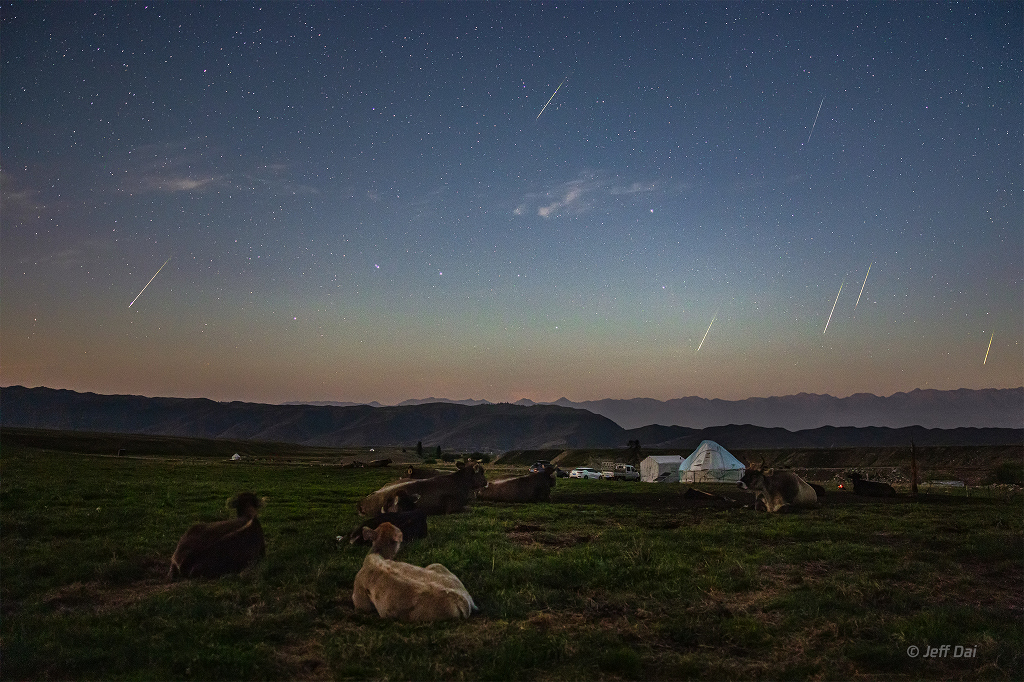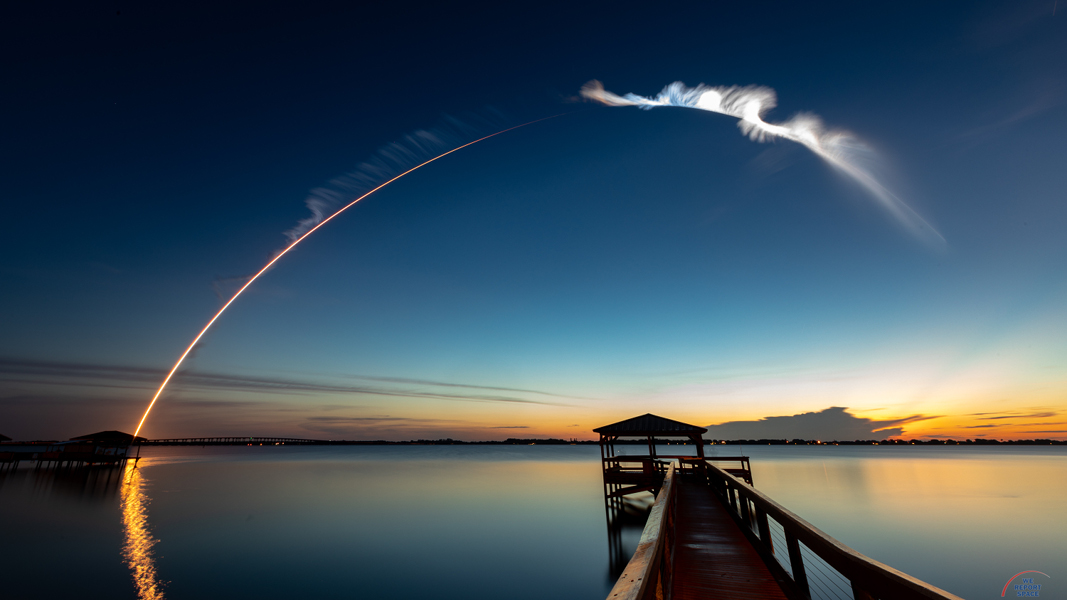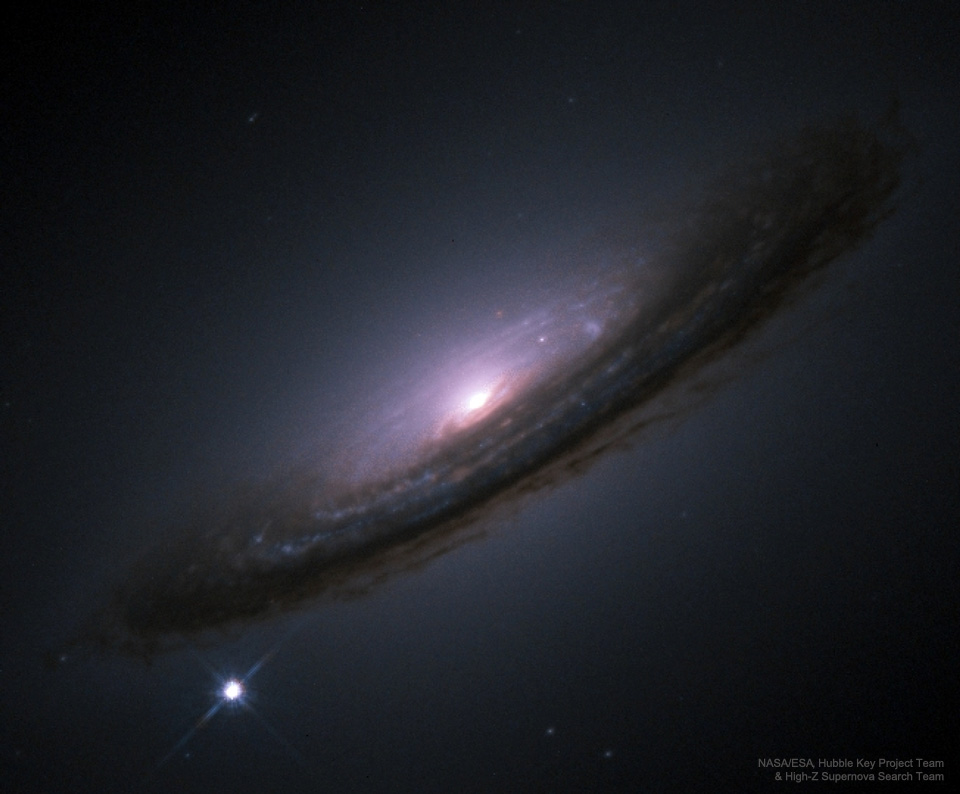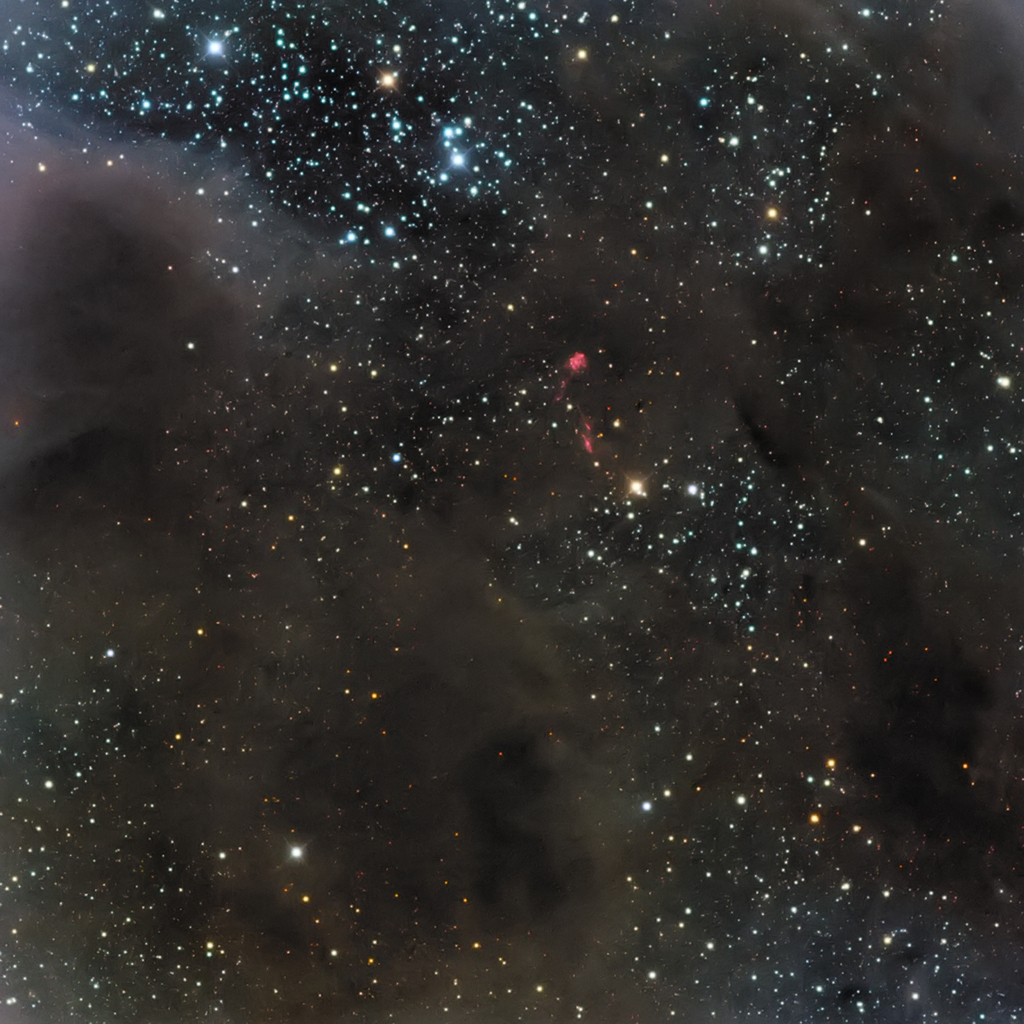Icon-II est une étude de Boeing pour un supersonique silencieux, du moins à peu près exempt de bang supersonique. Il pourrait voler plus vite que le son au-dessus des terres habitées, contrairement au Concorde auquel certaines contraintes sont imposées. On remarque les réacteurs placés au-dessus des ailes. © Nasa, Boeing
Nombre total de pages vues
17/08/2019
Science & Technology - Astronomy picture of the day : 1901 Photograph: The Orion Nebula

Image Credit: George Ritchey, Yerkes Observatory - Digitization Project: W. Cerny,
R. Kron, Y. Liang, J. Lin, M. Martinez, E. Medina, B. Moss, B. Ogonor, M. Ransom, J. Sanchez (Univ. of Chicago)
Explanation: By the turn of the 20th century advances in photography contributed an important tool for astronomers. Improving photographic materials, long exposures, and new telescope designs produced astronomical images with details not visible at the telescopic eyepiece alone. Remarkably recognizable to astrophotographers today, this stunning image of the star forming Orion Nebula was captured in 1901 by American astronomer and telescope designerGeorge Ritchey. The original glass photographic plate, sensitive to green and blue wavelengths, has been digitized and light-to-dark inverted to produce a positive image. His hand written notes indicate a 50 minute long exposure that ended at dawn and a reflecting telescope aperture of 24 inches masked to 18 inches to improve the sharpness of the recorded image. Ritchey's plates from over a hundred years ago preserve astronomical data and can still be used forexploring astrophysical processes.
16/08/2019
Science & Technology - Astronomy picture of the day : The Elephant's Trunk Nebula in Cepheus

Image Credit & Copyright: Chuck Ayoub
Explanation: Like an illustration in a galactic Just So Story, the Elephant's Trunk Nebula winds through the emission nebula and young star cluster complex IC 1396, in the high and far off constellation of Cepheus. Also known as vdB 142, the cosmic elephant's trunk is over 20 light-years long. This colorful close-up view was recorded through narrow band filters that transmit the light from ionized hydrogen, sulfur, and oxygen atoms in the region. The resulting composite highlights the bright swept-back ridges that outline pockets of cool interstellar dust and gas. Such embedded, dark, tendril-shaped clouds contain the raw material for star formation and hide protostars within. Nearly 3,000light-years distant, the relatively faint IC 1396 complex covers a large region on the sky, spanning over 5 degrees. The dramatic scene spans a 1 degree wide field, about the size of 2 Full Moons.
Science & Technologie - Avions du futur : La soucoupe volante

L’équipe du projet CleanEra, menée par Etnel Straatsma, de l’université technologique de Delft (Hollande), a imaginé une gigantesque soucoupe volante, une forme censée réduire la consommation. Cette équipe hollandaise étudie différentes solutions pour des avions plus économes, notamment le retour à l’hélice. © CleanEra, Delft University of Technology
15/08/2019
Science & Technology - Astronomy picture of the day : The Perseids and the Plough

Image Credit & Copyright: Jeff Dai (TWAN)
Explanation: Despite interfering moonlight, many denizens of planet Earth were able to watch this year's Perseid meteor shower. This pastoral scene includes local skygazers admiring the shower's brief, heavenly flashes in predawn hours near peak activity on August 13 from Nalati Grassland in Xinjiang, China. A composite, the image registers seven frames taken during a two hour span recording Perseid meteor streaks against a starry sky. Centered along the horizon is the Plough, the north's most famous asterism, though some might see the familiar celestial kitchen utensil known as the Big Dipper. Perhaps the year's most easily enjoyed meteor shower, Perseid meteors are produced as Earth itself sweeps through dust from periodic comet Swift-Tuttle. The dust particles are vaporized at altitudes of 100 kilometers or so as they plow through the atmosphere at 60 kilometers per second.
13/08/2019
Science & Technology - Astronomy picture of the day : Supernova Cannon Expels Pulsar J0002

Image Credit: F. Schinzel et al. (NRAO, NSF), Canadian Galactic Plane Survey (DRAO), NASA (IRAS); Composition: Jayanne English (U. Manitoba)
Explanation: What could shoot out a neutron star like a cannon ball? A supernova. About 10,000 years ago, the supernova that created the nebular remnant CTB 1 not only destroyed a massive star but blasted its newly formedneutron star core -- a pulsar -- out into the Milky Way Galaxy. The pulsar, spinning 8.7 times a second, was discovered using downloadable software Einstein@Home searching through data taken by NASA's orbiting Fermi Gamma-Ray Observatory. Traveling over 1,000 kilometers per second, the pulsar PSR J0002+6216 (J0002 for short) has already left the supernova remnant CTB 1, and is even fast enough to leave our Galaxy. Pictured, the trail of the pulsaris visible extending to the lower left of the supernova remnant. The featured image is a combination of radio images from the VLA and DRAO radio observatories, as well as data archived from NASA's orbiting IRAS infraredobservatory. It is well known that supernovas can act as cannons, and even that pulsars can act as cannonballs -- what is not known is how supernovas do it.
09/08/2019
Science & Technology - Astronomy picture of the day : Atlas at Dawn

Image Credit & Copyright: Michael Seeley
Explanation: This single, 251-second long exposure follows the early flight of an Atlas V rocket on August 8, streaking eastward toward the dawn from Cape Canaveral Air Force Station, planet Earth. The launch of the United Launch Alliance rocket was at 6:13am local time. Sunrise was not until 6:48am, but the rocket's downrange plume at altitude is brightly lit by the Sun still just below the eastern horizon. Waters of the Indian River Lagoon in Palm Shores, Forida reflect subtle colors and warming glow of the otherwise calm, predawn sky. The mighty Atlas rocket carried a military communications satellite into Earth orbit. Of course, this weekend the streaks you see in clear skies before the dawn could be Perseid Meteors.
07/08/2019
Science & Technology - Astronomy picture of the day : Jupiter Engulfed and the Milky Way

Image Credit & Copyright: Mohammad S. Hayati
Explanation: This is a good month to see Jupiter. To find our Solar System's largest planet in your sky, look toward the southeast just after sunset -- Jupiter should be the brightest object in that part of the sky. If you have a binoculars or a small telescope, you should be able to see Jupiter's four brightest moons right nearby, and possibly some cloud bands. The featured image was taken about a month ago from the Persian Gulf. The image shows Jupiter just to the right of the nearly vertical band of the central disk of our Milky Way Galaxy. The unnamed rock formations appear in projection like the jaws of a giant monster ready to engulf the Jovian giant. When you see Jupiter, it may be interesting to know that NASA's robotic Juno spacecraft is simultaneously visiting and studying the giant planet. Saturn is also visible this month, and although it is nearby to Jupiter, it is not as bright.
04/08/2019
Science & Technology - Astronomy picture of the day : Rumors of a Dark Universe

Image Credit: High-Z Supernova Search Team, HST, NASA
Explanation: Twenty-one years ago results were first presented indicating that most of the energy in our universe is not in stars or galaxies but is tied to space itself. In the language of cosmologists, a large cosmological constant -- dark energy -- was directly implied by new distant supernova observations. Suggestions of a cosmological constant were not new -- they have existed since the advent of modern relativistic cosmology. Such claims were not usually popular with astronomers, though, because dark energy was so unlike known universe components, because dark energy's abundance appeared limited by other observations, and because less-strange cosmologies without a signficant amount of dark energy had previously done well in explaining the data. What was exceptional here was the seemingly direct and reliable method of the observations and the good reputations of the scientists conducting the investigations. Over the two decades, independent teams of astronomers have continued to accumulate data that appears to confirm the existence of dark energy and the unsettling result of a presently accelerating universe. In 2011, the team leaders wereawarded the Nobel Prize in Physics for their work. The featured picture of a supernova that occurred in 1994 on the outskirts of a spiral galaxy was taken by one of these collaborations.
02/08/2019
Science & Technology - Astronomy picture of the day : Chamaeleon II Dark Cloud

Image Credit & Copyright: Don Goldman
Explanation: A small constellation hiding near the south celestial pole, The Chamaeleon boasts no bright stars. Stars are forming within its constellation boundaries though, in a complex of dark, dusty molecular clouds. Some 500 light-years distant, the Chamaeleon II dark nebula inhabits this view where the cosmic dust clouds standout mostly in silhouette against the starry southern sky. The telescopic frame is about the angular size of a Full Moon and so spans about 5 light-years at the dark cloud's estimated distance. Scattered near center a telltale reddish glow from identified Herbig-Haro objects is seen in the sharp image, jets of shocked glowing gas emanating from recently formed stars.
Inscription à :
Commentaires (Atom)
ASTRONOMY - Orion and the Ocean of Storms
2025 December 13 Orion and the Ocean of Storms Image Credit: NASA , Artemis 1 Explanation: On December 5, 2022, a camera on board the u...

-
2022 September 26 All the Water on Planet Earth Illustration Credit: Jack Cook, Adam Nieman, Woods Hole Oceanographic Institution ; Data ...
-
2025 May 11 The Surface of Venus from Venera 14 Image Credit: Soviet Planetary Exploration Program , Venera 14 ; Processing & Copyri...